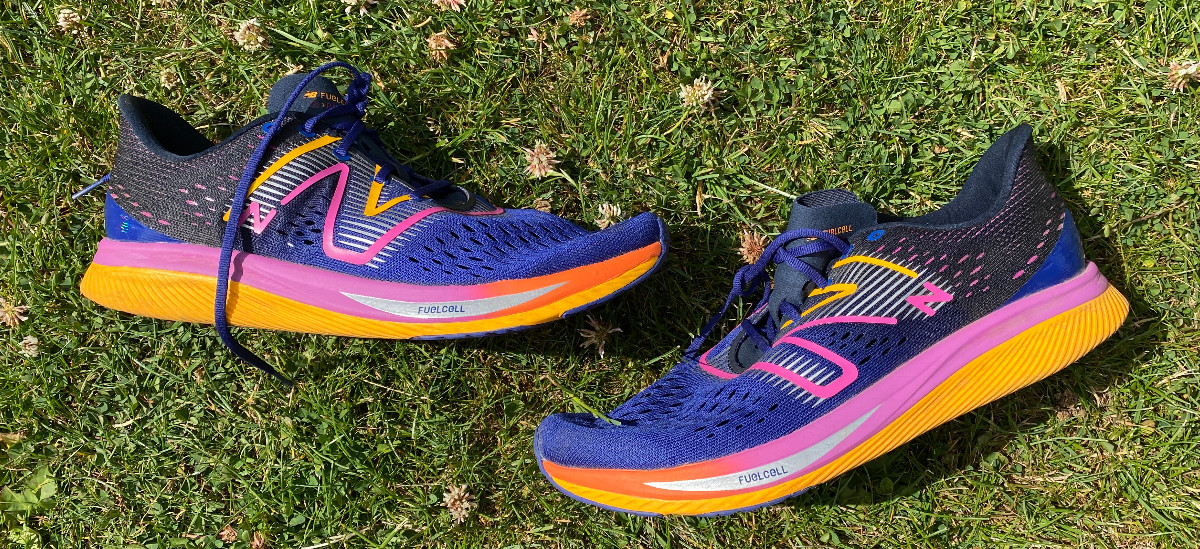Our Verdict
The New Balance SuperComp Pacer is a terrific racing shoe for 5K and 10K, but lacks the propulsion of a higher-stack carbon shoe, and it’s a little too expensive to be a worthwhile purchase for most runners.
For
- Lightweight but cushioned
- More nimble than high-stack shoes
Against
- Outsole not durable
- Lacks the cushion of other super-shoes
You can trust Coach
The New Balance FuelCell SuperComp Pacer is the latest of a new breed of racing shoes with a lower stack than the best carbon plate running shoes, which usually have stack heights that push right up against the 40mm limit set by World Athletics.
The other lower-stack super-shoes I have tested are the Nike ZoomX Streakfly and Adidas Takumi Sen 8, and while I found found them fun they were not quite up to the standard of archetypal carbon shoes like the Nike Vaporfly or Asics Metaspeed Sky+.
It’s a similar story with the SuperComp Pacer, though it might still be an interesting option for those runners craving the grounded feel of racing flats.
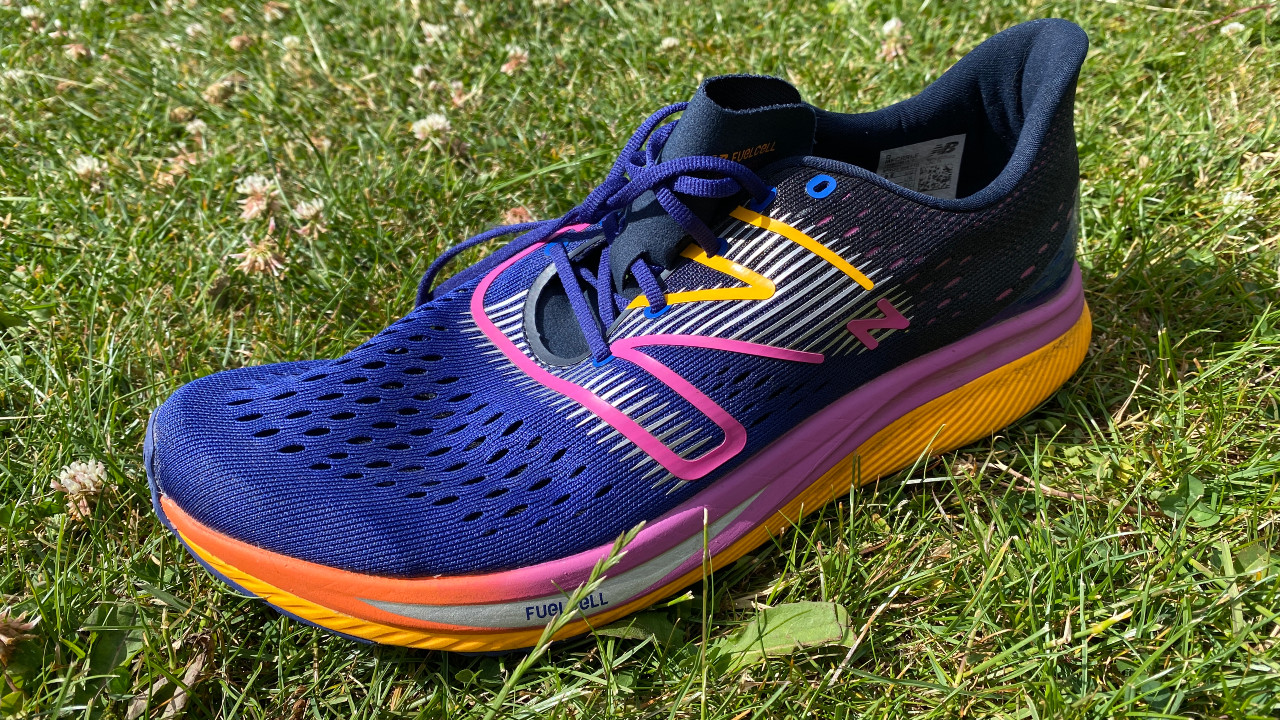
New Balance FuelCell SuperComp Pacer: Price And Availability
The SC Pacer is available now and costs $150 in the US and £160 in the UK, which is cheaper than most super-shoes and also the Adidas Takumi Sen 8, which is $180/£170. The Nike Streakfly is cheaper in the UK at £135, although it’s slightly more expensive than the New Balance shoe in the US at $160.
Design And Fit
The SC Pacer is designed to bridge the gap between carbon super-shoes and traditional racing flats, and it incorporates design elements of both: it’s very light at 7oz/199g in my UK 9 and the stripped-back mesh upper has minimal padding.
The stack height is in the region of 28-30mm (the exact height isn’t specified) and the construction of the midsole is two layers of New Balance’s FuelCell foam sandwiching a full carbon plate. FuelCell foam is very soft and springy when used in the New Balance RC Elite 2, but with the Pacer it has a firmer feel because of the lower stack. The shoe has an 8mm drop.
There is minimal rubber on the outsole to keep the weight down, with forefoot coverage and then two small strips at the back of the shoe. The rubber is almost flush with the foam as well, meaning the Pacer is unlikely to be particularly durable unless you use it strictly on well-maintained roads.
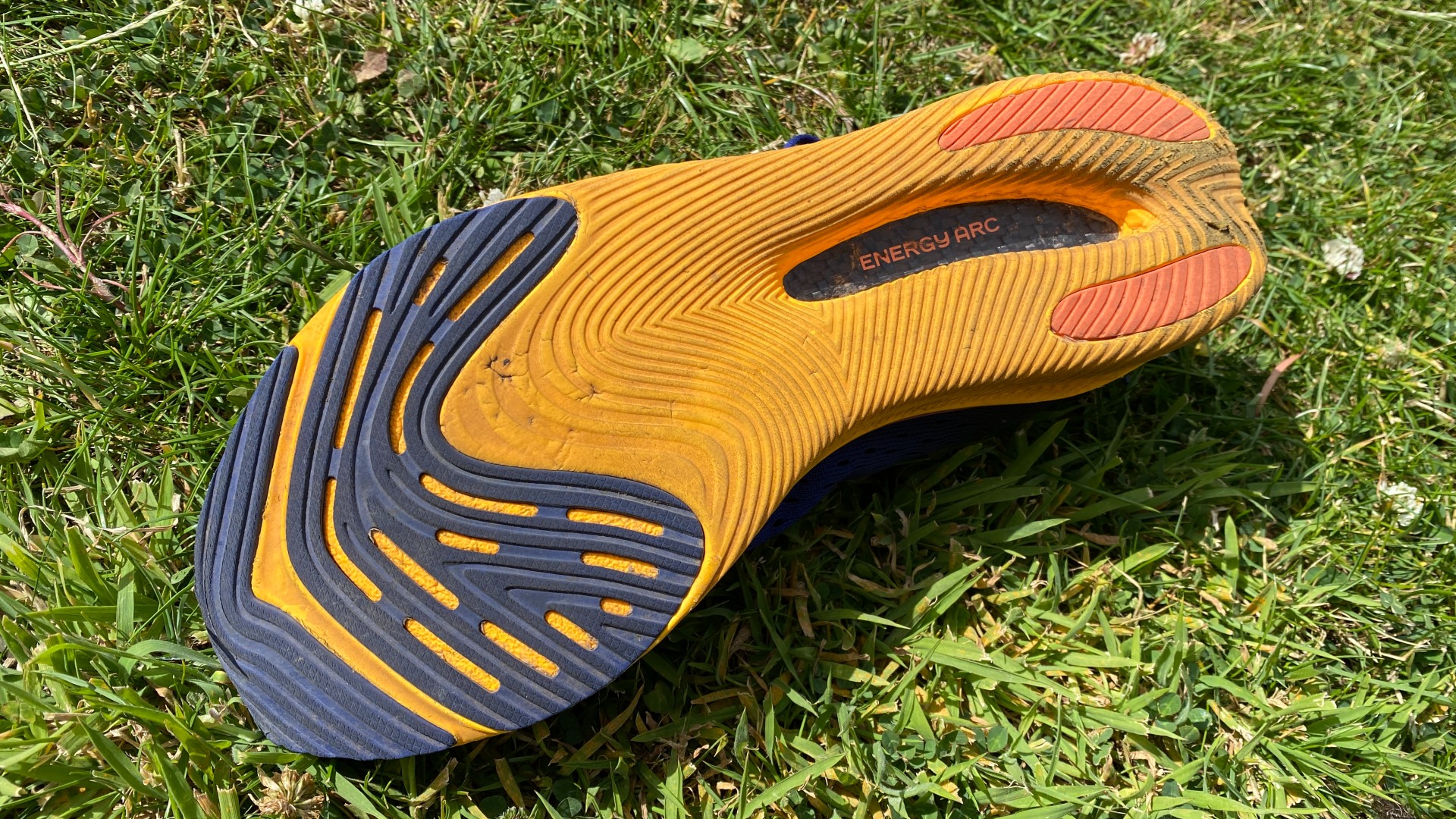
The Pacer has a very tight fit, to the point where I’d go half a size up. The narrow fit around the midfoot works well for me, but the shoe is short in the toe box in my normal size, and even over shorter races I’d prefer a bit more room up top.
How I Tested This Shoe
I have done several workouts and a 10K race in the SC Pacer, testing it at a range of speeds but focusing on the fast stuff since that’s what it is designed for. I’ve also used the New Balance RC Elite 2 extensively for both training and races, and before the carbon revolution I used to race in the New Balance 1400v6 racing flat, which shares some characteristics with the SC Pacer.
Running Performance
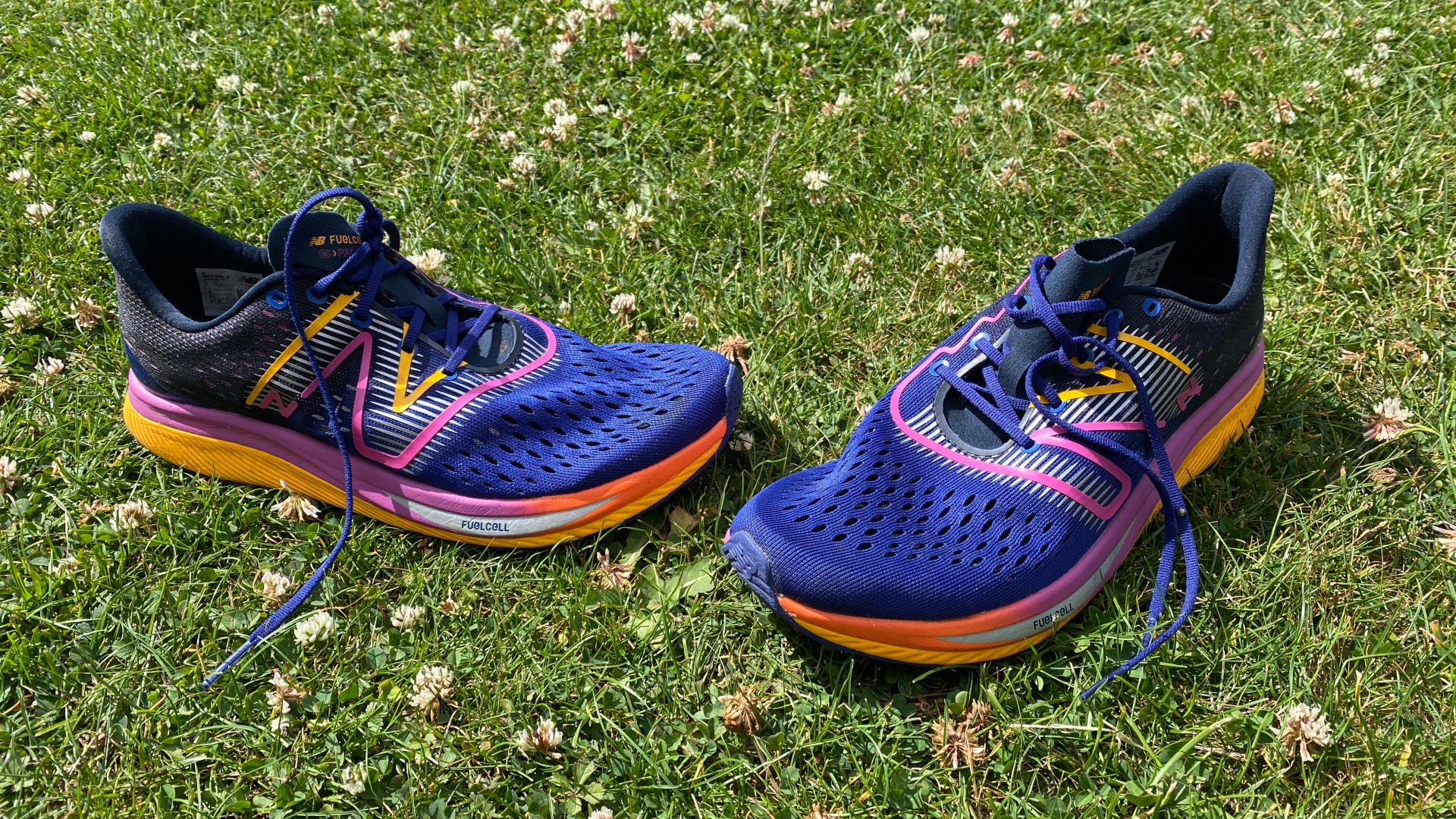
I was nervous about my first run in the SC Pacer, which was an eight-mile (around 13km) progression run moving from easy to steady pace, finishing around 5min 45sec/mile. It’s the kind of fairly long workout I love doing in carbon shoes or even cushioned daily trainers, but I feared the SC Pacer would be too firm and stripped-back to be enjoyable.
That was not the case. It’s easy to forget that a stack height of around 30mm would have been high for a racing shoe less than a decade ago. The FuelCell foam is also much more comfortable than the old-school EVA foams used in flats, even with a stiff carbon plate in the midsole. Aside from my toes being cramped because of the small fit, the Pacer was comfortable and quick over the course of the progression run, plus a long warm-up and warm-down at very easy paces.
Next up I had a 10K race that seemed perfect for the Pacer. The route was hilly and on a mix of roads and light trails, where the nimbleness and lower stack of the SC Pacer might be beneficial compared with a full super-shoe.
There were certainly points in the race where using the Pacer was a boon. Taking turns on broken ground and pushing up hills was easier in the lightweight shoe, and it has more feel for the ground than a high-stack racer, which makes it more stable when on anything other than good roads.
However, when you do hit a patch of flat or downhill road then it loses out to high-stack shoes in bounce and propulsion. The SC Pacer delivers some of that punch, but not nearly as much, and your legs take more of a beating because of the firmer feel.
This was particularly noticeable when I did a workout of five two-mile reps, running the first two in the SC Pacer and the last three in the Adidas Adios Pro 3, a max-stacked carbon racing shoe. The SC Pacer felt much lighter and nimbler – it felt faster in fact – but actually when cruising along in the bouncy Adidas it was easier to hit the target pace for the session.
Is The New Balance FuelCell SuperComp Pacer Worth It?
Like the other low-stack super-shoes I have tested, the SC Pacer is a great short-distance racing shoe but no better than a high-stack carbon shoe, especially the lighter ones like the Nike Vaporfly Next% 2, or Asics Metaspeed Sky+ and Edge+.
Those high-stack shoes are much better for longer events and protect the legs better when using them during training as well. Given that the SC Pacer is $150/£160 it’s hard to justify the cost unless you exclusively run short events and don’t want to spend the extra $50/£50 or so for a full carbon shoe. That said, you can probably find the Vaporfly for around the same price as the SC Pacer in sales.
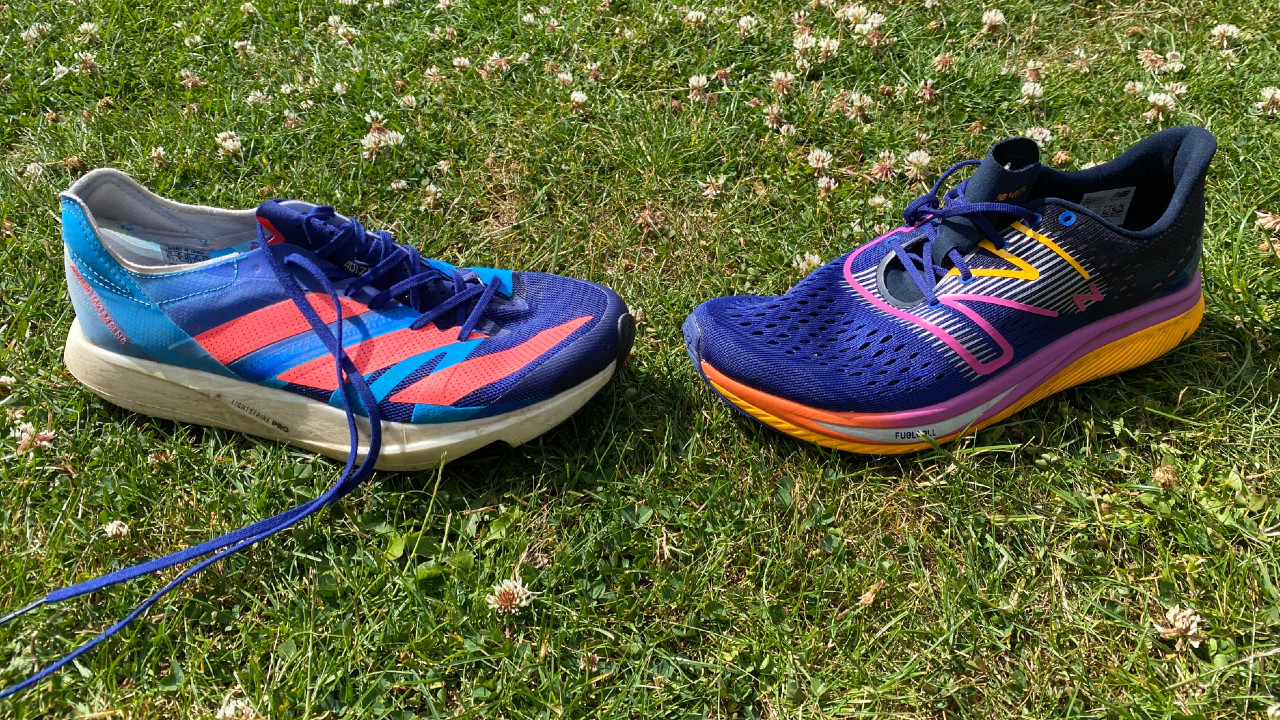
When compared with the Adidas Takumi Sen 8 and Nike Streakfly, the SC Pacer is the most reminiscent of a traditional racing flat, and has a more propulsive ride than the Streakfly because of the carbon plate.
The Takumi Sen 8 is the pick of the bunch, though, with a ride that’s more comfortable than the SC Pacer’s yet equally propulsive. I’ve used the Takumi for around 180km of running this year because it has such a fun, fast ride and works well for both training and racing, even if I’d still pick the Vaporfly over it when the chips are down.

Nick Harris-Fry is a journalist who has been covering health and fitness since 2015. Nick is an avid runner, covering 70-110km a week, which gives him ample opportunity to test a wide range of running shoes and running gear. He is also the chief tester for fitness trackers and running watches, treadmills and exercise bikes, and workout headphones.
